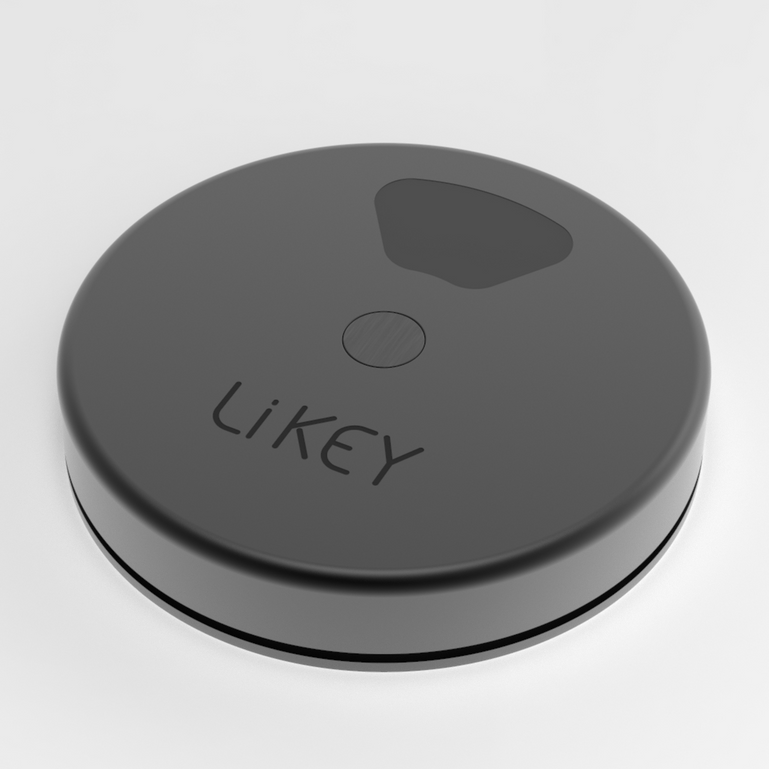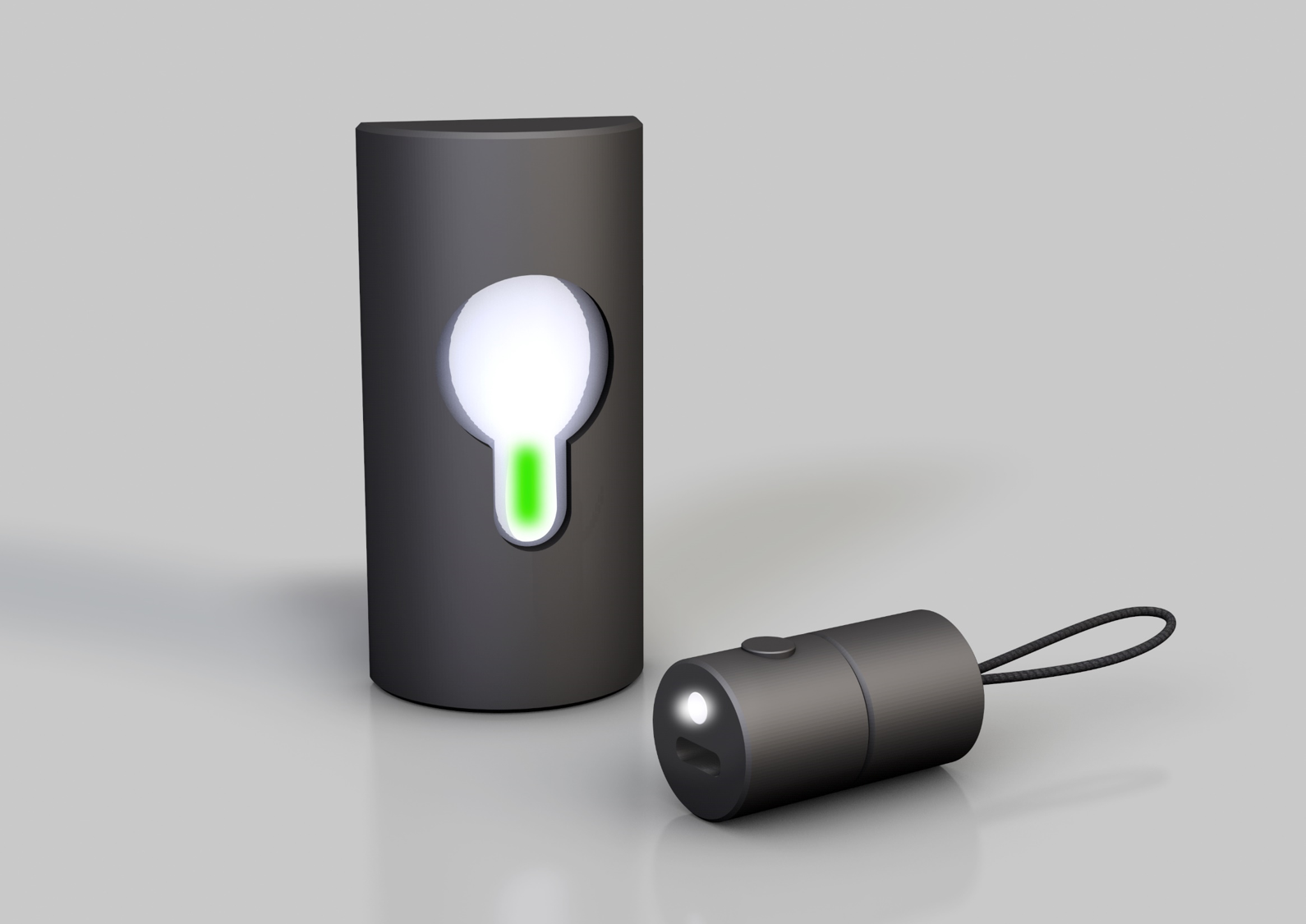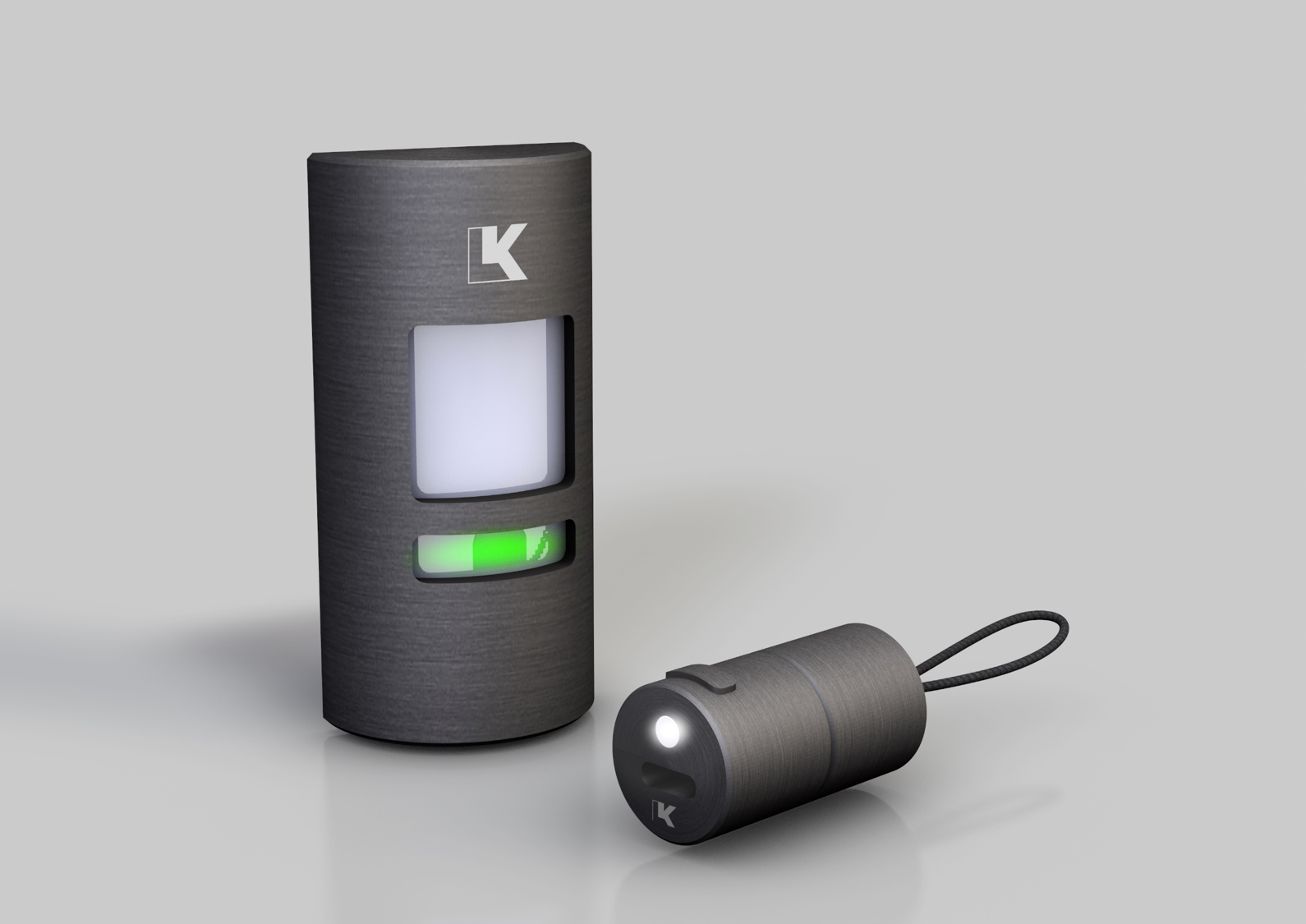Table of Contents
LiKEY LiFi System By LiNA
In this article, we will talk about the LiKEY LiFi system made by LiNA. We will first talk about the company LiNA, its CEO and founder and the LiKEY system.
LiNA
LiNA is a french LiFi company founded in 2018 and is currently based in Palaiseau, Île-de-France. LiNA is an innovative company specialising in LiFi technology (Data transmission via light). It develops and deploys hardware and software solutions to improve business performance. LiNA's offer currently revolves around three solutions:
LiKEY: ultra-secure access control management solution via smartphone;
LiSA: innovative lighting control solution (smart lighting);
LiMAP: indoor way finding and indoor space management solution using indoor geolocation technology.
Thanks to its multi-technical expertise, LiNA offers companies turnkey solutions.
LiNA's ambition is to become a world leader in LiFi, thanks to its progressively expanding portfolio of services. In a context of ever-increasing connectivity, security and environmental constraints, LiNA aims to create a digital ecosystem from light to meet the challenges of tomorrow.
LiNA Vision
Today under-exploited, light has the particularity of being everywhere and of being a harmless and most secure means of communication. Moreover, LiNA believe that the best technological solutions must be based on existing infrastructures and installations.
This is why their solutions are based on the most universal of networks: lighting. The LED is gradually establishing itself as the preferred means of lighting with energy savings as a result. Due to its remarkable physical properties, LED today offers new possibilities, thus opening a new era for lighting.
As a result, LiNA's solutions reduce the carbon impact of buildings while offering innovative services to its occupants and visitors.
The CEO and Founder
LiNA was founded by Théo Lazuech. A graduate in photonics engineering and then in management (MBA), Théo Lazuech is now one of the few experts in LiFi technology in the world.
After having worked in the Technical and Financial management of IT & Telecom services, he embarked on this entrepreneurial adventure. LiFi is a technology that he encountered during his engineering graduation project. He then ended up with a prototype operating at a level close to the commercial state of the art at the time.
Théo Lazuech holds the position of CEO of LiNA, with the current main missions of strategy, finance, product marketing, commercial prospecting and the technical architecture of solutions.
Committed by nature, Théo Lazuech is determined to create innovative solutions that bring benefits to humans and the environment.
LiKEY LiFi System
According to their site, the LiKEY system is an innovative access control solution powered by LiFi technology. LiNA further states the following benefits of the LiKEY system:
-Plug and Play system
-Smartphone app (Android & iOS)
-Secure hosting of applications and data
-LiKEY hardware for network and access control
-Web-based access control management platform
-Software and user support
-Security and Serenity: Unlike NFC and Bluetooth, it is impossible to hack access.
-Accessibility: Our solution is compatible with 100% of smartphones.
-Practicality: No need for a key! Your accesses are unlocked with the flash of your smartphone.
USER DEVICE REQUIREMENTS
Android & iOS
PRICE
The LiKEY device alone can cost around 400 euros (£340; $415). Other accessories and devices come at different prices.
How it works
To activate the lock, you will need to have an application downloaded on your smartphone that will trigger a sequence of light specific to your lock to trigger the opening. This flash allows you to authenticate securely. It's very simple, just place your smartphone in front of the lock to open or close the door, it's simple, convenient and secure. If you don’t have a smartphone, LiNA has also designed a smart key to unlock your accesses.
Credit to LiNA SAS - Smart key to open LiKEY locks.
LiNA SAS also stated that they are aware the perfect product can only have harmonious shapes. There are also different designs available to choose.
Credit to LiNA SAS
Credit to LiNA SAS
Credit to LiNA SAS
You can also watch the following video to see a demonstration by Mr Théo Lazuech on how the LiKEY system works. The video is in french however we managed to translate the original transcript in English.
English Translation
“Hello, I am Théo Lazuech, founder of the start-up LiNA, a start-up specialised in Li-Fi technology which is the transmission of data by light. So today I'm going to introduce you to the access control solution we call LiKEY. So today, to do access control, we essentially use three types of media, which are keys, badges and even remote controls. And as everyone has been able to experience it, we have relatively many of them that we constantly follow. So it's relatively bulky and maybe it's not that. The current main defect is that today, what is expected of an access control solution? It really secures access to premises. Except that today, there are many limits with respect to current solutions. On one hand, in use, can keys, badges and others be treated or easily stolen? And on the other hand, techniques and technological which is only a key or a badge. One can easily copy them in a pirated way or even not for that matter. And that is a real problem. And on the other hand, we can use other types of solutions which are biometrics. Except that it is extremely expensive and legally very complex to use on a large scale for an organisation. So, the LiKEY solution is an access control solution that relies on the smartphone as a badge. The particularity is that, instead of using RFID and NFC technology to establish communication, the smartphone camera flash is used. This has several advantages”.
“On the one hand is that the smartphone. All smartphones are already compatible since they are all equipped with a flash and on the other hand we know that the telecommunication that we are going using flash is going to be totally interesting. Without further delay, I will simply demonstrate. I take my smartphone, I'm going to approach the access control reader. There is a communication that is established between the reader and the smartphone and a door is simply unlocked. So you see, it's a pretty common pattern that exists in access control. So we have an access reader which is on the wall, connected behind with an exit button. With manual trigger and door concept. And there, the type of bike we use is a fairly classic lock since it's a suction cup type lock. So here is a solution that relies on hardware but also on a whole software suite. There is a SAS web application on which you can manage all access, configure door locations on a card, take it remotely, take it in hand remotely, open the door and delegate access management to any type of manager and obviously manage access rights to all users. It is a solution that is aimed at companies, facility management or coworking spaces or business hotel, business incubator, but also on other markets such as the hotel industry or the collective residential sector. It is a very innovative solution, patented at European level, which I hope will attract your attention”.
French original transcript
“Bonjour, je suis Théo Lazuech, fondateur de la start up LiNA, une start up spécialisée dans la technologie Li-Fi qui est la transmission de données par la lumière. Donc aujourd'hui, je vais vous présenter la solution de contrôle d'accès que nous appelons LiKEY. Donc aujourd'hui, pour faire du contrôle d'accès, on utilise essentiellement trois types de supports qui sont les clés, les badges et même les télécommandes. Et comme chacun a pu en faire l'expérience, on en a relativement beaucoup que l'on fait suivre en permanence. Donc c'est relativement encombrant et c'est peut être pas ça. Le défaut principal actuel, c'est que aujourd'hui, qu'est ce qu'on attend d'une solution de contrôle d'accès? C'est qu'elle sécurise vraiment l'accès à des locaux. Sauf qu'aujourd'hui, il y a beaucoup de limites vis à vis des solutions actuelles. D'une part, à l'usage, est ce que les clés, les badges et autres, on peut les traiter ou se les faire voler facilement? Et d'autre part, techniques et technologiques qui est qu'une clé, un badge. On peut facilement les copier de manière pirate ou même pas d'ailleurs. Et ça, c'est un vrai problème. Et d'autre part, on peut utiliser d'autres types de solutions qui sont de la biométrie. Sauf que c'est extrêmement coûteux et juridiquement très complexe à utiliser à grande échelle pour une pour une organisation. Donc la solution LiKEY, c'est une solution de contrôle d'accès qui s'appuie sur le smartphone en tant que badge. La particularité, c'est que, au lieu d'utiliser la technologie RFID et NFC pour établir une communication, on utilise le flash de la caméra du smartphone. Serre a plusieurs avantages”.
“D'une part, c'est que le smartphone. Tous les smartphones sont déjà compatibles puisqu'ils sont tous équipés d'un flash et d'autre part on sait que la télécommunication que l'on va. Faire grâce au flash va être totalement intéressant. Sans plus attendre, je vais procéder à une démonstration. Tout simplement, je prends mon smartphone, je vais l'approcher du lecteur de contrôle d'accès. Il y a une communication qui s'établit entre le lecteur et le smartphone et on déverrouille une porte tout simplement. Donc vous voyez donc c'est un schéma assez commun qui existe dans le contrôle d'accès. Donc on a un lecteur d'accès qui est au mur, connecté derrière avec un bouton de sortie. Avec un déclencheur manuel et un concept de portes. Et là, le type de vélo qu'on utilise, c'est un verrou assez classique puisque c'est un verrou de type ventouse. Voilà donc une solution qui se repose sur du hardware mais aussi sur toute une suite logicielle. Il y a une application web en SAS sur lesquels on peut gérer tous les accès, configurer les emplacements de porte sur une carte, prendre à distance, la prendre en main à distance, l'ouverture de la porte et déléguer la gestion des accès à tout type de manager et évidemment gérer les droits d'accès à tous les utilisateurs. C'est une solution qui s'adresse aux entreprises, au facility management ou aux espaces de coworking ou hôtel d'entreprises, pépinière d'entreprises, mais aussi sur d'autres marchés comme l'hôtellerie ou alors le secteur résidentiel collectif. C'est une solution très innovante, brevetée au niveau européen, que j'espère vous attirer votre attention”.
LIna contact details
If you are interested in getting more information about their products or purchasing any of their products, you can contact LiNA on the following details:
Phone: +33 6 98 70 93 87
Email: contact@lina.lighting
Address: 42 Cours Pierre Vasseur, 91120 Palaiseau, France
Li-Fi Conference 2022
The next Li-Fi Conference is coming up on the 28th of June 2022 between 10 am and 4.30 pm CET.
It is interesting to realise that lights that illuminate offices, homes, cars, factories, our streets and more locations also can connect us to data and hence power the growing demand for connectivity and speed.
At this conference professionals from all over the globe will gather together in order to share applications, ideas, new developments and ways to integrate Li-Fi in services, both for consumers and professionals.
This conference will be held Live and Online. The venue will be the High Tech Campus 1, The Strip 5656 AE Eindhoven The Netherlands.
Online tickets can be bought at the following link:
https://tikcit.com/register/61e002336d7fc4b6745cab83/
What is LiFi?
LiFi, also known as "Light Fidelity" is a wireless optical networking technology, which uses light-emitting diodes (LEDs) to transmit data. In 2011, professor Harald Haas made a LiFi demonstration at the TED (Technology, Entertainment, Design) Global Talk on Visible Light Communication (VLC).
VLC uses light as a medium to deliver high-speed communication like Wi-Fi and complies with the IEEE standard IEEE 802.15.7. The IEEE 802.15.7 is a high-speed, bidirectional, and fully networked wireless communication technology-based standard similar to Wi-Fi's IEEE 802.11.
How does LiFi work?
LiFi is a high speed, bidirectional, and fully networked wireless communication of data using light. LiFi constitutes of several light bulbs that form a wireless network.
When an electrical current goes through to a LED light bulb, a stream of light (photons) emits from the lamp. LED bulbs are semiconductor devices, which means that the brightness of the light flowing through them can change at extremely high speeds. The signal is sent by modulating the light at different rates. The signal can then be received by a detector that interprets the changes in light intensity (the signal) as data. Also when the LED is ON, you transmit a digital 1, and when it is OFF, you transmit a 0.
LiFi Benefits
The primary benefits of LiFi are as follows:
• Security: Provides entirely secure access. Where there is no light there is no data.
• Safety: Does not produce electromagnetic radiation and does not interfere with existing electronic systems.
• Localisation: Allows localisation due to the small coverage area of LiFi access point - localisation can be used for very precise asset tracking.
• Data density: Provides ubiquitous high-speed wireless access that offers substantially greater data density (data rate per unit area) than RF through high bandwidth reuse.
Credit to Oledcomm
LiFi Applications
LiFi can be used for so many applications and the list is increasing every year. You can read our updated list of LiFi applications at the following link:
Credit to pureLiFi
In conclusion, if you are also interested to hear more information about the OWNII Coin or enquire about LiFi devices such as the LiFiMax and Trulifi, you can contact us through our chatbot or by sending an email through our contact us form. If you enjoyed this post and would like to hear more updates about LiFi technology, subscribe to our newsletter. Don’t forget to subscribe to our social media accounts. You can also join our Telegram group about LiFi technology on this link:
https://t.me/joinchat/FMzOmsEKyJFrU6Af











